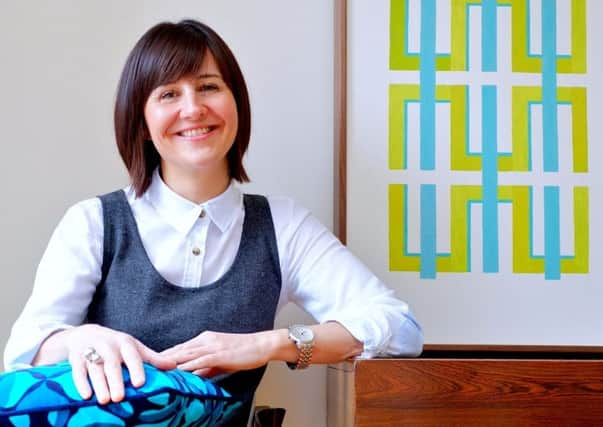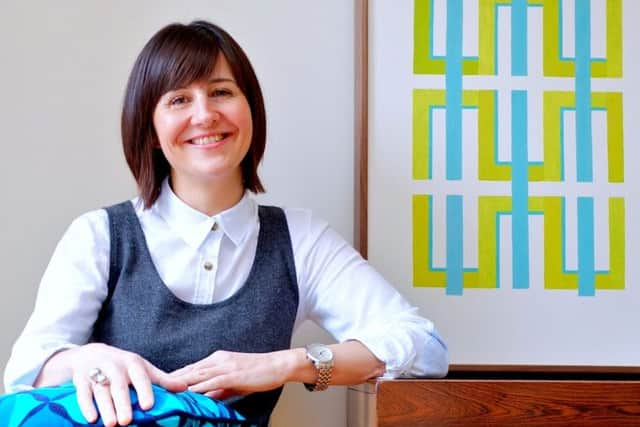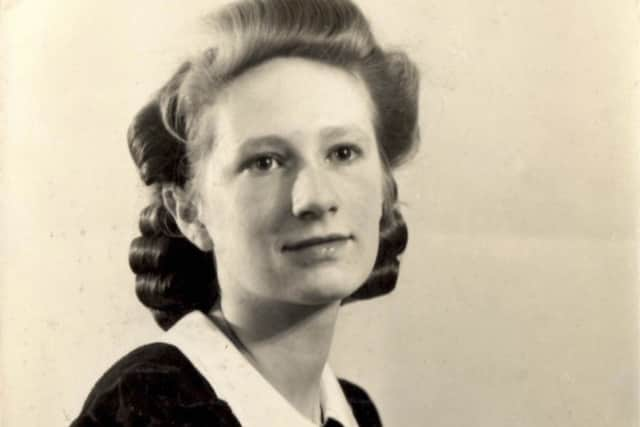Spotlight on a hidden talent


Keen to find some inexpensive original artwork for her newly-renovated house, Chelsea Cefai clicked on to eBay and typed in “paintings”.
The images began to blur as she scrolled through hundreds of listings, until one picture demanded her attention.
Advertisement
Hide AdAdvertisement
Hide Ad“I was struck by the designs, which were listed as ‘two prints by Sheila Bownas’. I asked the seller if he had any more and he said he had 210. He was selling them off bit by bit, but I knew they had to be kept together, so I asked if I could buy them all, not really knowing what I would do with them,” says Chelsea, who worked in the museum and gallery sector and knew that what she had bought was the work of a brilliant artist.


Her interest stirred, she started sleuthing from her home in Rugby. Her investigations, which began in 2008, led her to the late Sheila’s home in a small Yorkshire Dales village, then on to the Slade School of Fine Art in London and the archives of Liberty and M&S. Detective work also revealed the blatant sexism of the 1950s and a shy talent that never got the recognition it deserved.
Sheila’s surface pattern designs for textiles and wallpaper look as fresh and relevant today as they did when they were created 60 years ago and, together with her remarkable story, they sparked a mission to bring her work to a new audience.
“I fell in love with the work and with Sheila Bownas. It dates back to the 1950s, 60s and 70s but it is so timeless and so vibrant, I knew I had to do something with it. It felt like fate,” says Chelsea.
Advertisement
Hide AdAdvertisement
Hide AdThe result is the Sheila Bownas Collection with the designs revived as giclee prints, cards, cushions, lighting and a sofa. Chelsea, who studied photography, is also preparing for an exhibition about Sheila and her work will also go on display at Rugby Art Gallery and Museum next year. She then hopes to bring it to Yorkshire.


It will tell the story of how a girl with a prodigious talent for art made it from a tiny Dales village to a leading art school and how she quietly supplied the nation’s top manufacturers with hundreds of designs that graced the most fashionable homes.
“We only know that because she was a hoarder. She kept all correspondence so she is an archivist’s dream. All the letters of acceptance of her work exist but she sold her designs as a number, they didn’t carry her name,” says Chelsea.
Sheila’s journey started as the only child of Reg and Minnie Bownas, who ran a grocery shop and occasional B&B in the village of Linton, near Grassington. She was born in 1925 and loved to draw and paint. Encouraged by her art mistress at Skipton Girls’ High School, she won a county art scholarship to attend The Slade and her proud parents gave her their blessing, even though it meant losing her to the capital, which had barely recovered from the ravages of war. She won several prizes at The Slade, including the 1948 summer competition for Figures Beneath Trees, now held by the UCL Gallery.
Advertisement
Hide AdAdvertisement
Hide AdShe was so gifted she was awarded an extra year to study History of Art in Florence after which she returned to London and began painting portraits. Her painting of Miss Enid Wise, head teacher at Skipton Girls’ High School, was chosen for the Royal Academy Exhibition in the mid-1950s.
Portraiture didn’t generate the income she needed so she began designing surface patterns for textiles and wallpapers. As a freelance, she worked on commissions for the German firm PW Bruck-Messel and regularly had work accepted by Liberty, M&S and Crown.
Her collection of letters reveals that she tried for years to secure a permanent position but failed due to the sexism that existed in male-dominated design studios.
One letter sent from Crown wallpaper in 1959 states: “Thank you for your letter enclosing your design No. S.B. 286. I have decided to retain this design so would you please let us have your invoice? With reference to your desire to obtain a position in our studio, the Director feels that should an appointment be made at all, a male designer would be preferable, considering our future policy.”
Advertisement
Hide AdAdvertisement
Hide AdChelsea adds: “She carried on selling her work but never gave up applying for a job and there are around 100 rejection letters from the mid-50s to the late 60s. It’s sad but in a way it was a godsend because she wasn’t forced into a particular style. In fact, in one letter, her style is described as ‘searching and free’.
“She was very in tune with the trends, even though she was quiet, elegant and traditional, and not at all flamboyant or bohemian.”
In the 1960s, Sheila was commissioned to work on pictures for the National History Museum, mainly in the botanical section, and she enjoyed a brief time working on Tresco in the Scilly Isles. In the 1970s, she returned to Linton to be with her widowed mother, who had moved to a converted stable, known locally as Minn’s cottage. She had a tiny studio in an outbuilding and continued to build her enormous collection of portraits, landscapes and still life.
Friends and relatives had no idea of the extent of it until she passed away in 2007, aged 82.
Advertisement
Hide AdAdvertisement
Hide AdHer cousin, Dorothy Younger, says: “I visited her once a week and I knew she painted and was a good artist but she was a very private person and never talked about her work at all. When she died, we discovered hundreds of pictures.”
Villagers remember her as shy and, as she got older, increasingly reclusive. She would rise late at around noon and work into the night on her paintings. Bedtime was often as late as 4 or 5am.
She never married and never had a television. Her constant companion was Radio 4, although local children often popped in on Friday, which was her baking day.
Her goddaughter Rachel Elsworth, who grew up in the house opposite Sheila’s, says: “We’d go for cake and scones. She was a lovely person but I realised after her death how little I knew about her.
Advertisement
Hide AdAdvertisement
Hide Ad“She was quiet and kind and never spoke about herself or her work. She definitely wasn’t one to push herself forward but she was always very interested in you. We knew she was an artist and she always made me hand-painted Christmas and birthday cards.”
Her hoard of paintings and collages went to auction at Andrew Hartley’s in Ilkley after her death and although the large oil paintings did quite well, the rest realised very little.
Rachel says: “It’s so sad because it was only when I saw it all there that I realised how amazing she was.
“On the second day of the sale they were selling bundles of work for next to nothing, which felt awful. I bought as much as I could and I have some of her pictures in my house.”
Advertisement
Hide AdAdvertisement
Hide AdBoth she and Dorothy are thrilled that Chelsea Cefai is bringing the designs back to life. The products are all made in Britain and some, like the lamps and the sofa, are collaborations with British designer makers. All carry Sheila’s name.
“I’ve tried to do what I think she would want,” says Chelsea, who recently visited Sheila’s family in Yorkshire.
“It’s been hard work and there have been times when I felt like giving up but then I feel like it’s something I have to do. I love her work and it saddens me to think that an artist with such wonderful talent could so easily slip through the net of recognition That’s what drives me. Sheila Bownas is not just a number in a file now, she’s a name in the limelight.”
• The Sheila Bownas collection is available online at www.sheilabownas.com. Chelsea is looking for a venue in Yorkshire for the Sheila Bownas exhibition. Email her at [email protected]